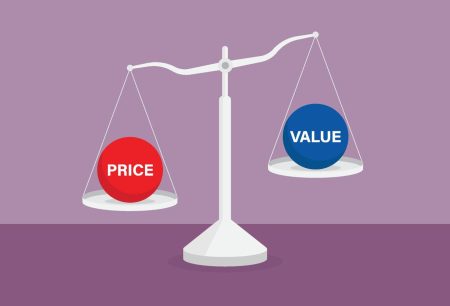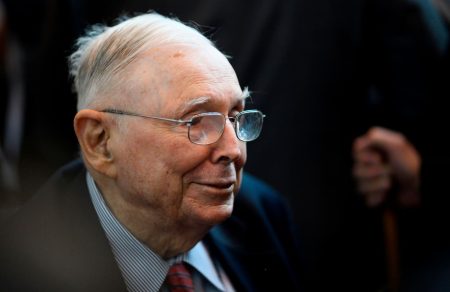Curb Your Enthusiasm. The title of Larry David’s long-running HBO series might prove apt investment advice, given how sharply bonds and stocks rallied this past week after the government reported that consumer prices rose all of 0.1 percentage point less in October than economists had estimated. The headline consumer price index was unchanged for the month (after rounding down from a 0.04% increase) while the “core” measure, excluding food and energy costs, was up 0.2%.
After further stripping away housing expenses, inflation was nil in October. Measured from a year ago, overall consumer prices were up 3.2%, while core prices were up 4.0% and core ex-housing was up just 1.4%. In other words, inflation was negligible if you didn’t eat, drive, or pay for electricity, heat, or hot water, or put a roof over your head.
That such measures elicited huzzahs from the markets likely says more about investor psychology than the health of the economy. Main Street sees high prices, up 18% in round numbers from December 2020, and dismisses as elitist claptrap that a slower rate of increase is evidence of lower inflation. Wall Street sees a deceleration of inflation as portending the much-anticipated end of Federal Reserve interest-rate hikes and the beginning rate reductions next year.
The federal-funds futures market is pricing in four 25-basis-point (one-quarter percentage point) cuts by the end of 2024 in the wake of the latest CPI print, according to the CME FedWatch site. From the current target range of 5.25%-5.50%, the futures market prices discount the initial trim coming on May Day next year, with another at the end of July, followed by moves in mid-September and mid-December.
The latest Bank of America global fund manager survey, released just ahead of Tuesday’s CPI print, showed professional investors were already anticipating as much. Some 61% were looking for lower bond yields, the most in the history of the widely watched poll. Reflecting that conviction, the portfolio managers were the most overweight bonds in two decades, except for December 2008 and March 2009, in the teeth of the financial crisis.
This would be the seventh time since mid-2022 that the markets anticipated a “pivot” by the Fed toward lower short-term interest rates, according to a client note penned by Deutsche Bank macro strategist Henry Allen following the CPI report.
“On the previous six occasions, those hopes have been dashed, since inflation has remained too fast for the Fed to be comfortable cutting rates,” he wrote.
Since early 2021 inflation has topped the central bank’s 2% target, while its most recent Summary of Economic Projections, released in September, envisions one more hike in December and just two cuts next year. That adds up to a median expectation that the fed-funds rate will be 5.1% at the end of 2024, well above the futures market’s pricing for a 4.38% midpoint by then. The consistent story of this rate cycle is that investors have been premature in anticipating Fed rate cuts and have had to push out their timing further into the future.
The markets’ exuberance since October—with the
S&P 500 index
up nearly 10% from its lows and the yield on the benchmark 10-year Treasury down half a percentage point from its peak above 5%—suggests that “a Goldilocks scenario, in which inflation is vanquished and real growth remains robust, is once again the dominant narrative,” according to a report from Macro Intelligence 2 Partners.
But the resulting easing of financial conditions should mean the economy will slow only slightly in the first quarter of next year, thwarting the Fed’s avowed objective of further curbing inflation. It might sound circular, but the drop in bond yields, which was based on anticipated Fed rate cuts in 2024, might actually stay the hand of Fed Chairman Jerome Powell and his fellow monetary-policy makers from lowering rates.
Robert Tipp, chief investment strategist at PGIM Fixed Income, similarly thinks persistent inflation above 2% will keep the Fed from cutting as much as the market appears to expect. Plus, the persistent Treasury borrowing needs from the “gigantic” budget deficit will keep bond yields from declining meaningfully, he said in an interview.
Specifically, Tipp looks for the yield curve to “normalize,” with longer-term interest rates 50-to-100 basis points above short-term cash rates. So even with Fed cuts, bond investors should expect returns only from interest income, not from price appreciation that would accompany declines in longer Treasury yields, as fund managers in the BofA survey anticipate.
Instead, Tipp is emphasizing returns from corporate obligations, both investment-grade and high-yield credits. In addition, he likes high-quality collateralized loan obligations. (CLOs carve up portfolios of corporate loans into tranches; the first slice gets paid first and is the least risky, with successive ones yielding more, commensurate with their greater risk.) Yields on corporate credits might outperform Treasuries as a result of the federal government’s massive borrowing needs, he says.
This tack implicitly goes against the markets’ anticipated scenario of big Fed rate cuts totaling a full percentage point in the coming year. Fixed-income investors would do well to consider the relatively defensive funds highlighted in our Oct. 30 bond-market cover story, which emphasized low durations and higher yields. In other words, they should curb their enthusiasm about further bond rallies.
Write to Randall W. Forsyth at [email protected]
Read the full article here















